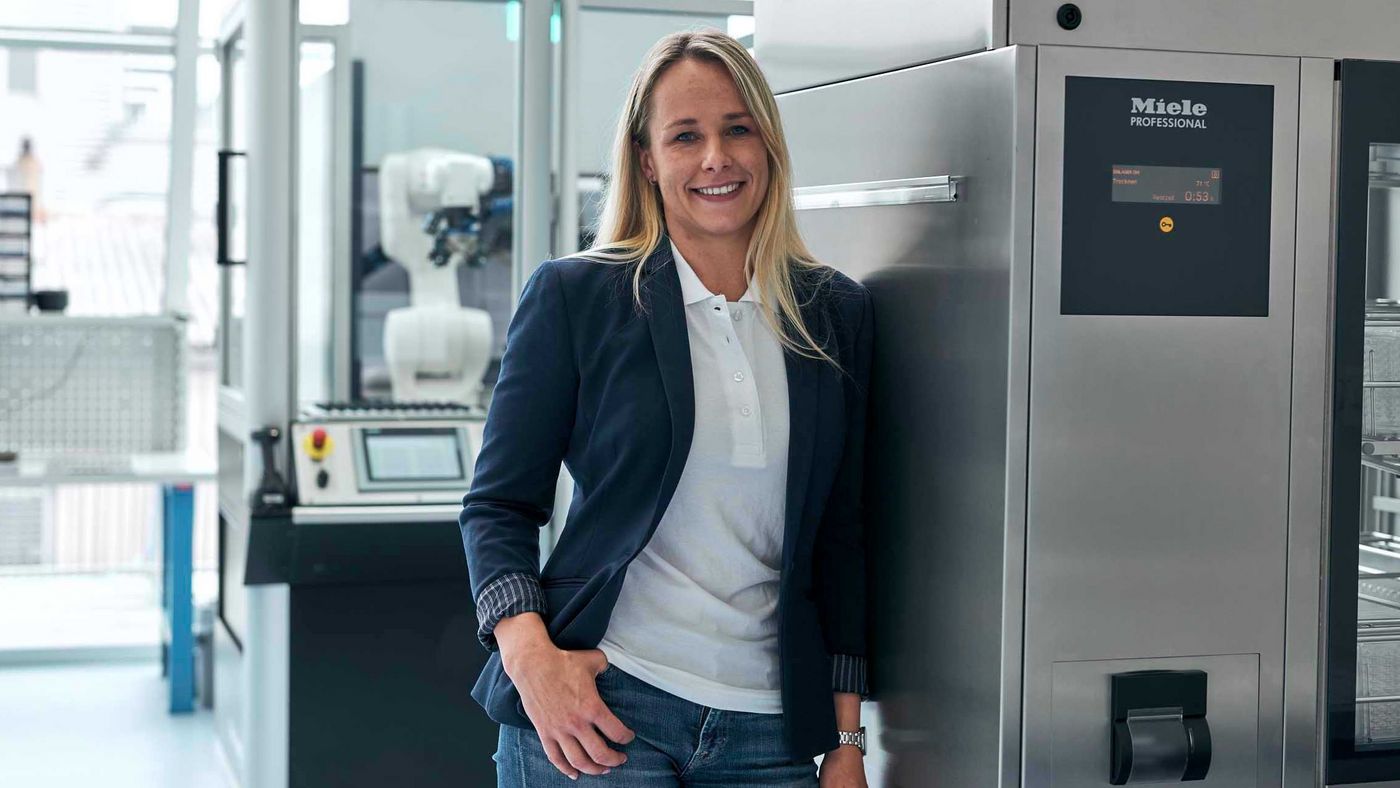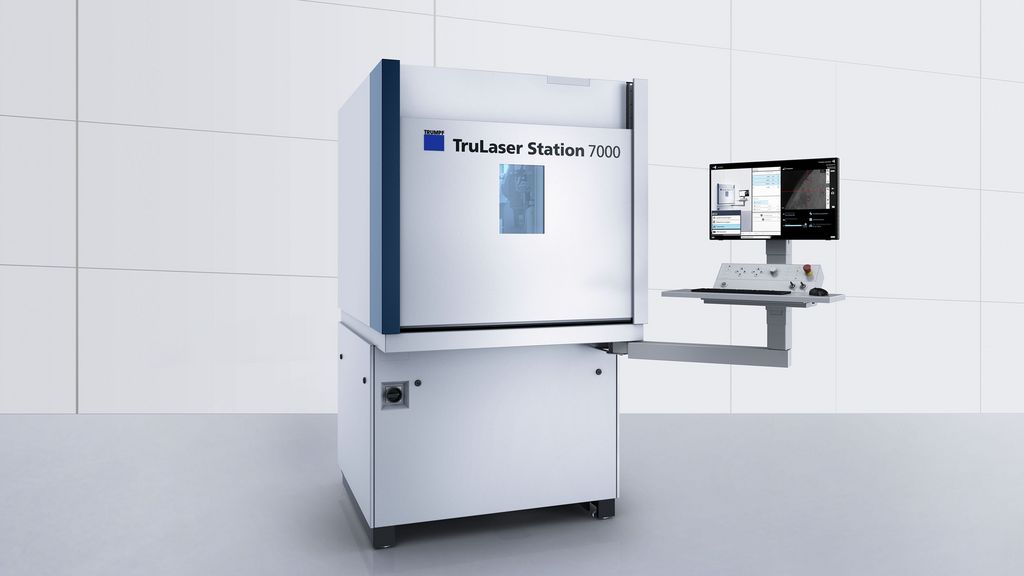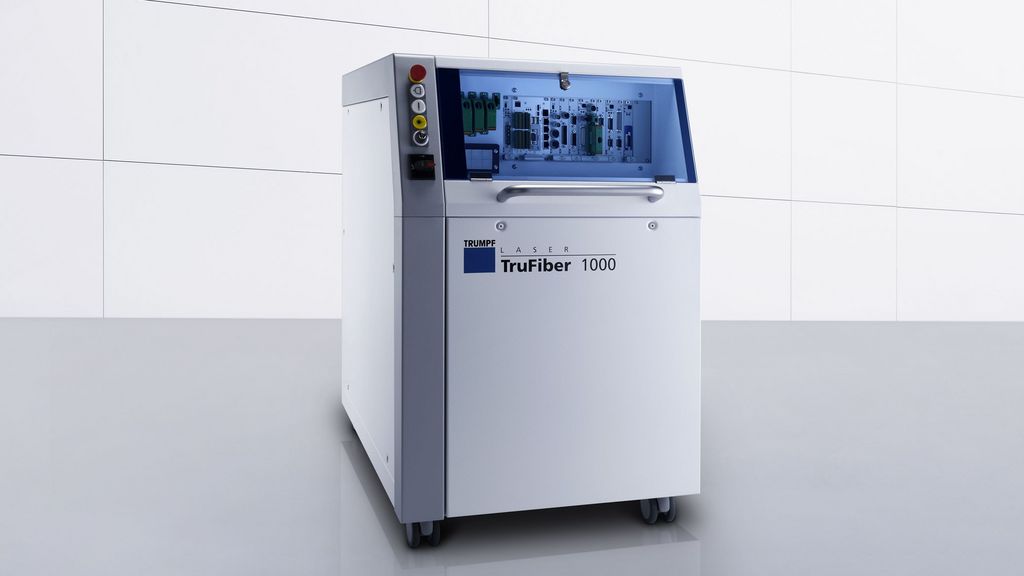Precise welding, flexible automation – that is the medical technology of the future
Automated manufacturing systems tend to be the exception rather than the rule in medical technology. Humans are often quicker and more sensitive than any robot, particularly when welding filigree components. There is also great variant diversity and few identical parts. The long-established company Karl Storz SE Co. KG from Tuttlingen is now breaking new ground when welding eyepieces for its medical endoscopes, combining a TruLaser Station 7000 with a mobile robot cell from wbt automation at its production site in Widnau. Sarah Mühleck is responsible for the production there and is enthusiastic: “This is making it so much easier for our staff, and we are welding with precision and efficiency. And if manual loading is better for certain components, we just disconnect the robot cell.”
Challenges
Filigree – this is the best word to describe the thin stainless steel components for the endoscopes from Karl Storz. Manual tasks such as manual welding at 16-times magnification are order of the day. Often, precision work like this can only be carried out by human hand. And the multitude of variants also complicates machine or even automated production. At the same time, there is a real lack of skilled professionals. Storz is taking countermeasures with its own apprenticeship program. However, the company wants to employ the highly trained employees in line with their abilities, and not for monotonous machine loading and unloading. Wolfgang Karl is the expert for all laser welding, laser cutting and laser marking processes at the headquarters in Tuttlingen. He says, “We will continue to have many manual tasks; however, at the same time we are investigating where it would be beneficial to implement machine processing and automation.”
Solutions
Site manager Sarah Mühleck was looking for an efficient solution for welding eyepieces at the site in Widnau, Switzerland. It quickly became clear that this production step could be automated. The first decision was to obtain a new TruLaser Station 7000. Mühleck emphasized that the demands were stringent: “The weld seam must be completely leak-tight, no moisture may penetrate the endoscope.” The stainless steel parts are less than one millimeter thick, the welding depth and weld seam width are correspondingly low. The Karl Storz project team selected a fiber-based solid-state laser TruFiber 500 with an output of 500 kilowatts as a laser source. It is precise enough to weld the filigree parts. The suitable automation solution was provided by wbt automation: a mobile robot cell with a flexible gripper system which can be quickly connected and disconnected.
Implementation
The combination of a productive laser welding system and a flexible robot cell very quickly proved its worth. The Kuka robot‘s double gripper removes two welded parts and inserts two unprocessed parts simultaneously. The cell has a drawer system with four drawers. It contains room for 960 components. “Parallel to the welding process, we can open the drawers on the other side, remove the finished and welded eyepieces and fill the drawer with new ones,” reports Mühleck. “This makes things so much easier for our staff and we are significantly faster. The TruLaser Station 7000 alone reduced the welding process time per component from ten to one and a half seconds. In addition, our energy consumption has greatly decreased.”
Forecast
Sarah Mühleck and Wolfgang Karl agree: the project in Widnau shows how far medical technology can go in terms of automation. “We will still continue to process many things by hand, but automate operations where it makes sense. We can do both with the flexible robot cell,” says Karl. He has already found reliable and flexible partners in wbt automation and TRUMPF for future projects on the journey to increased automation.











